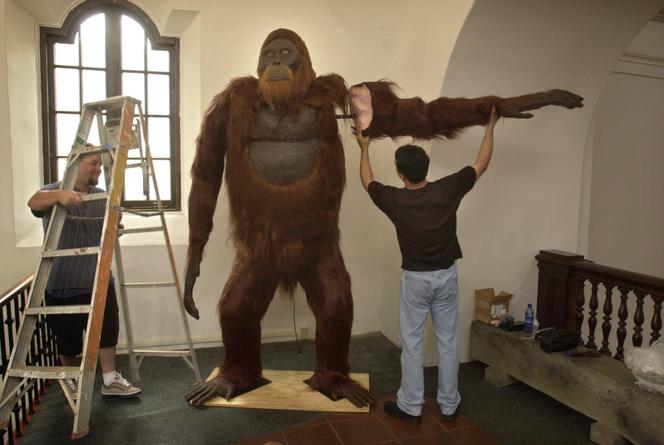


This animal is practically a myth. Firstly, because of its size: three meters tall, 250 kg of brute strength. No other primate has ever reached such heights. Next to it, on scientific benches, the gorilla's silhouette looks almost childlike. By naming it a gigantopithecus – Gigantopithecus blacki, to be precise – in 1935, German researcher Gustav von Koenigswald didn't stretch his imagination too far. Nor did cryptozoologists push it too far to make him the yeti's supposed ancestor.
It has to be said that three mysteries have long surrounded the two millennia or so of the beast's existence. Firstly, the extreme rarity of the fossil remains that have come to light since the discovery of the first tooth by a Chinese apothecary at the beginning of the 20th century. In all, 100 or so teeth and four partial mandibles have been found, but no skull and no body. Yingqi Zhang, from Beijing's Institute of Paleontology, has searched hundreds of caves in southern China over the last 10 years but has come up empty-handed.
The second enigma surrounded its place on the primate phylogenetic tree, long the subject of debate. Since 2020, the matter has been settled: Giganto is a direct cousin of Pongo, better known by its common name of orangutan. Our last common ancestor dates back 15 million years. Distant, but potentially quite close. Much closer, in any case, than the other extinct giants, dinosaurs and mammoths.
A third mystery has pursued the animal, from which Yingqi Zhang and colleagues from five Australian institutions lifted the veil on Thursday, January 11, in the journal Nature. "Why did it disappear, when all the other great apes managed to survive?" asked Kira Westaway, a sediment dating specialist at Macquarie University in Sydney. To get to the bottom of this, the research team first applied no fewer than five different dating techniques, both to the teeth found in the caves and to the sediments surrounding them. Twenty-two caves were investigated by the researchers. The result is a chronology of sorts, from the giant's appearance some 2.2 million years ago to its disappearance some 250,000 years ago. One theory, that humans were responsible for the giant's extinction, has been debunked. At the time, no Homo had yet appeared in Asia.
So who killed Giganto? French geochronologist Renaud Joannes-Boyau, Senior Lecturer at Australia's Southern Cross University, has found the answer in the animal's teeth. By analyzing the enamel, he was able to trace the evolution of the animal's diet, certain behaviors and stress. To this was added a study of the pollens present in the sedimentary layers. "A fairly clear scenario has emerged," said Joannes-Boyau, with one culprit: the climate.
You have 30% of this article left to read. The rest is for subscribers only.
